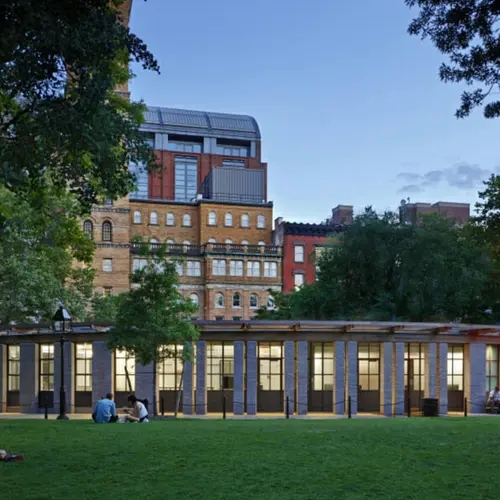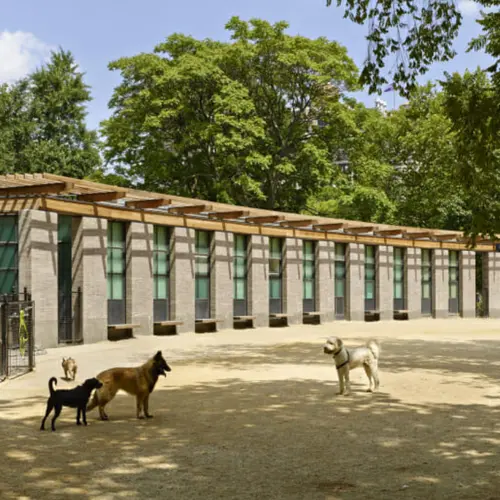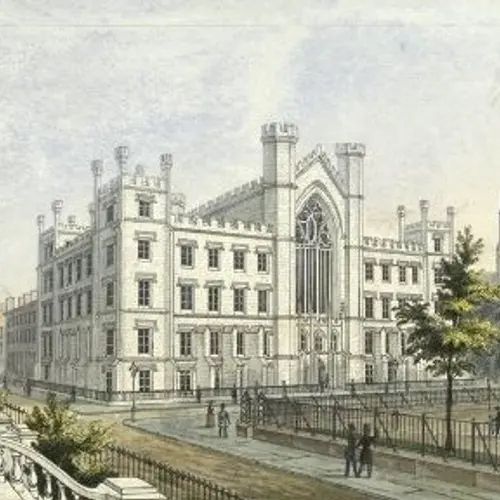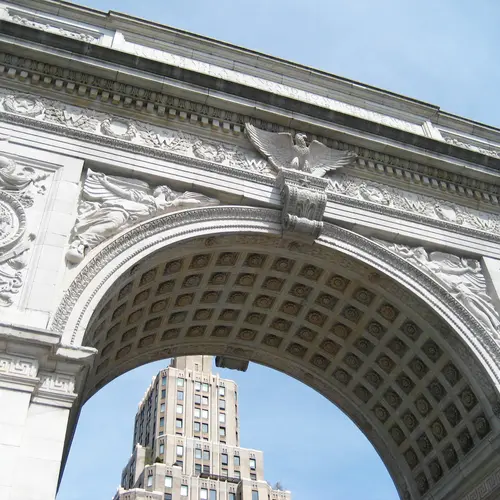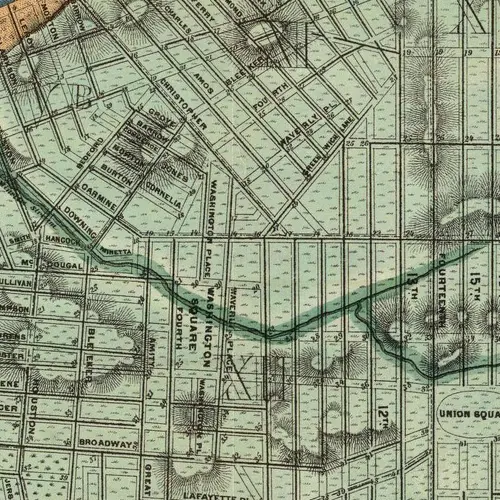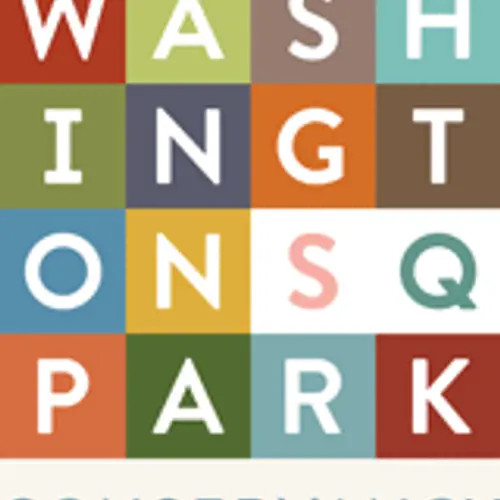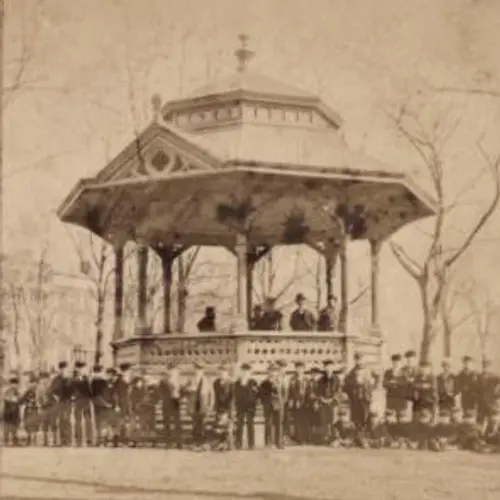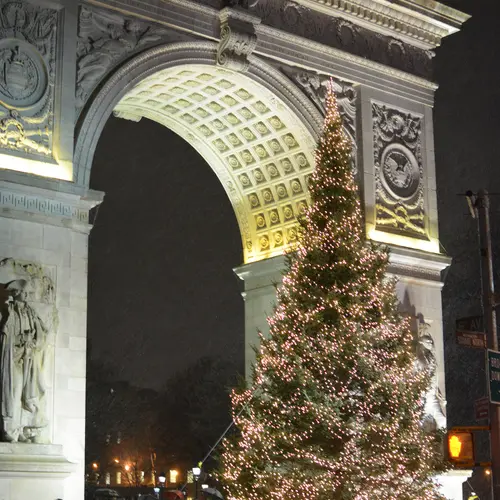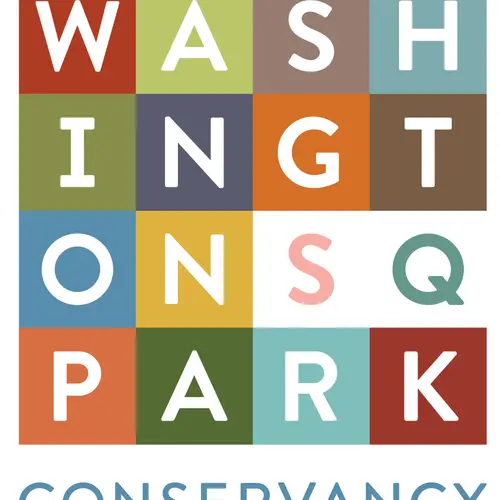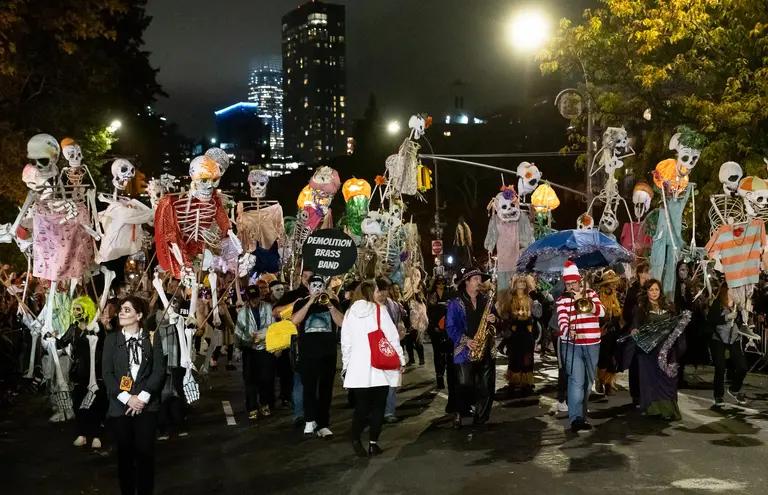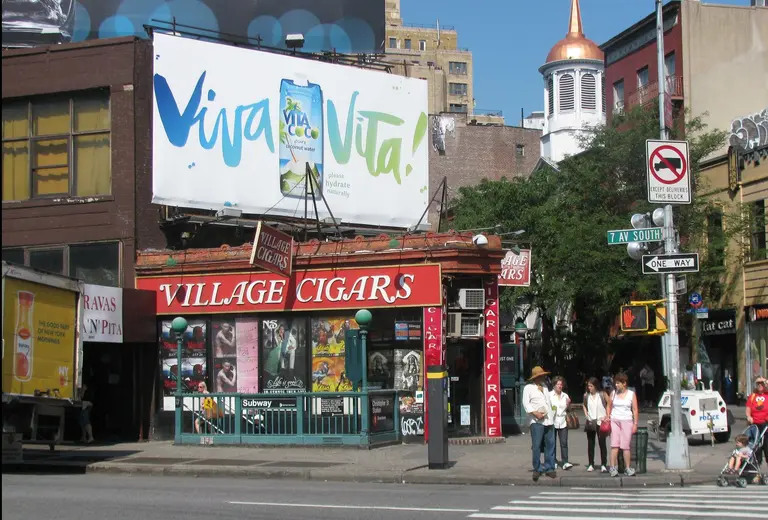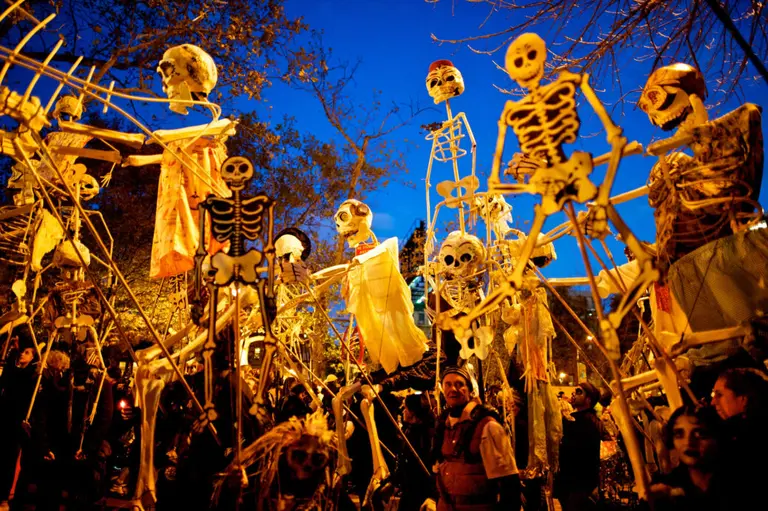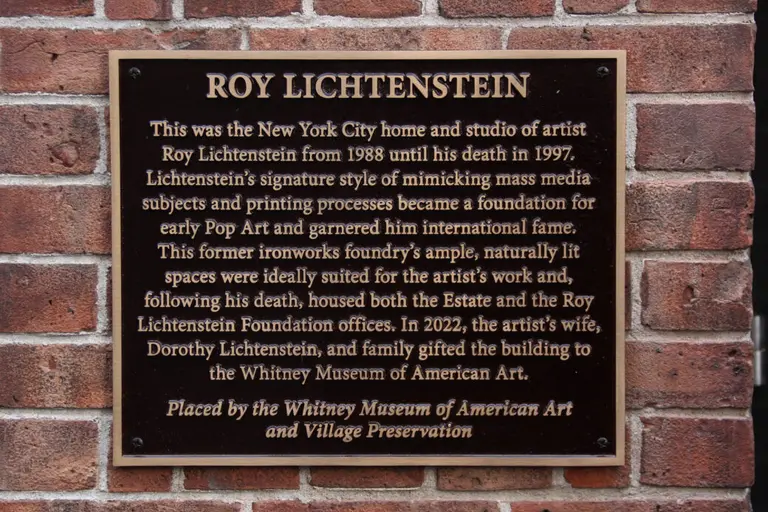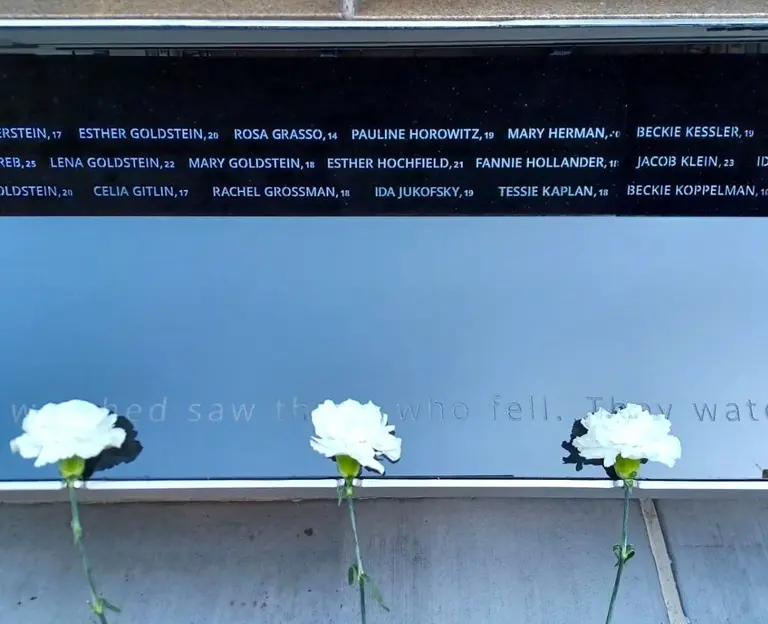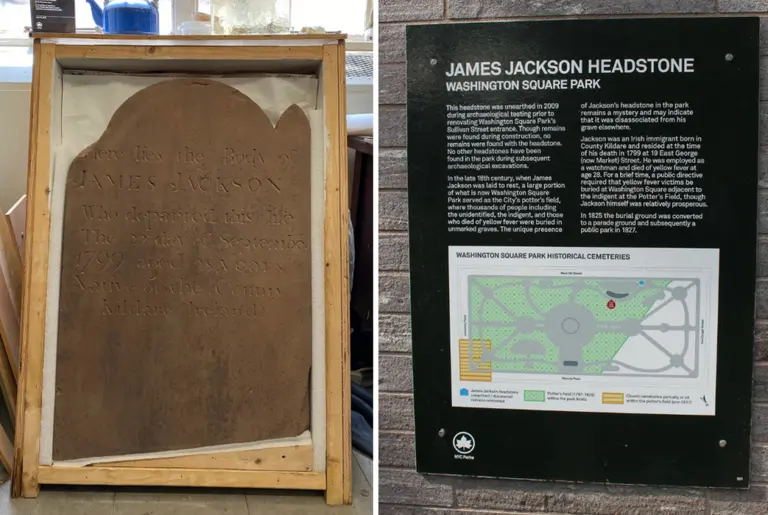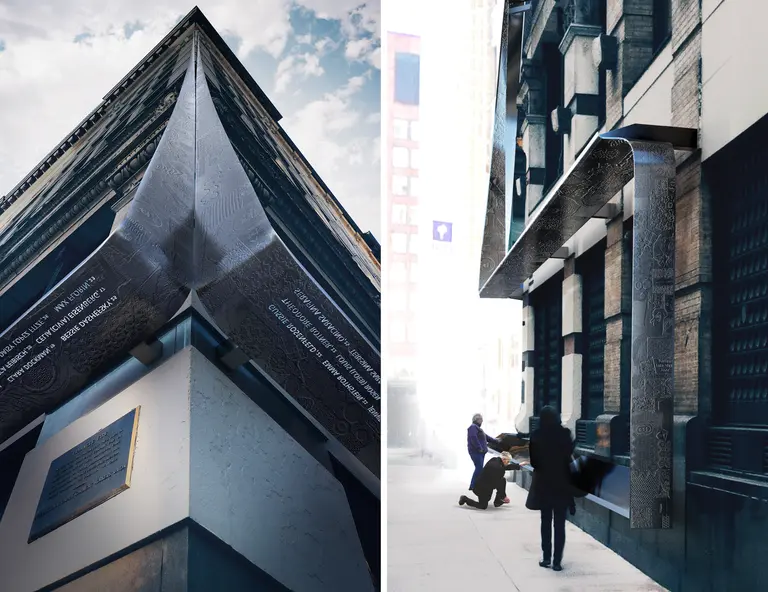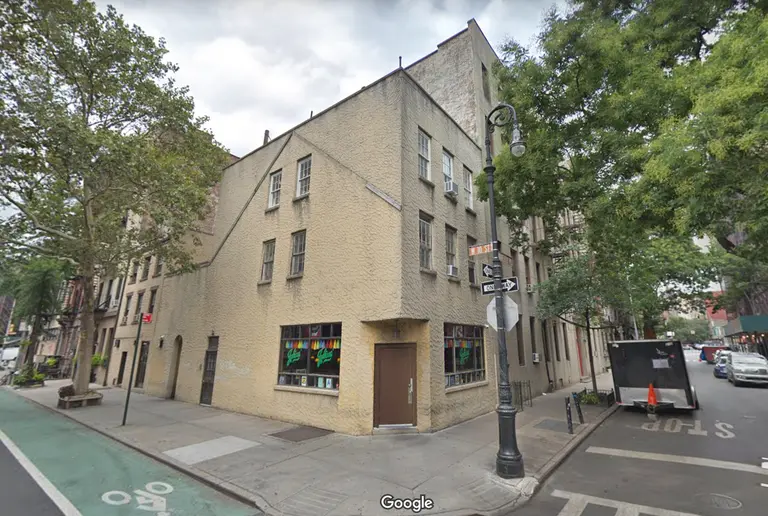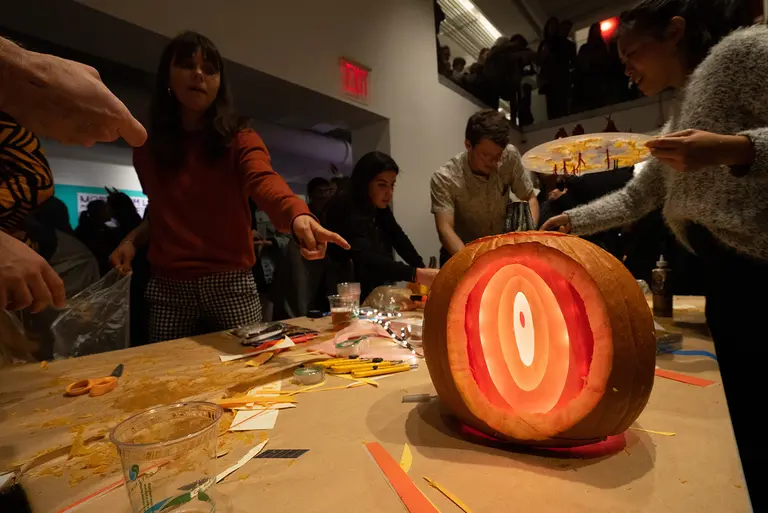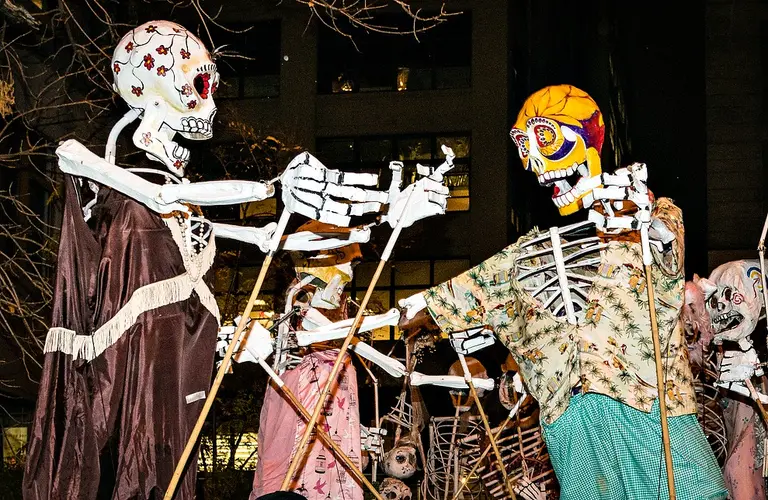10 secrets of Washington Square Park
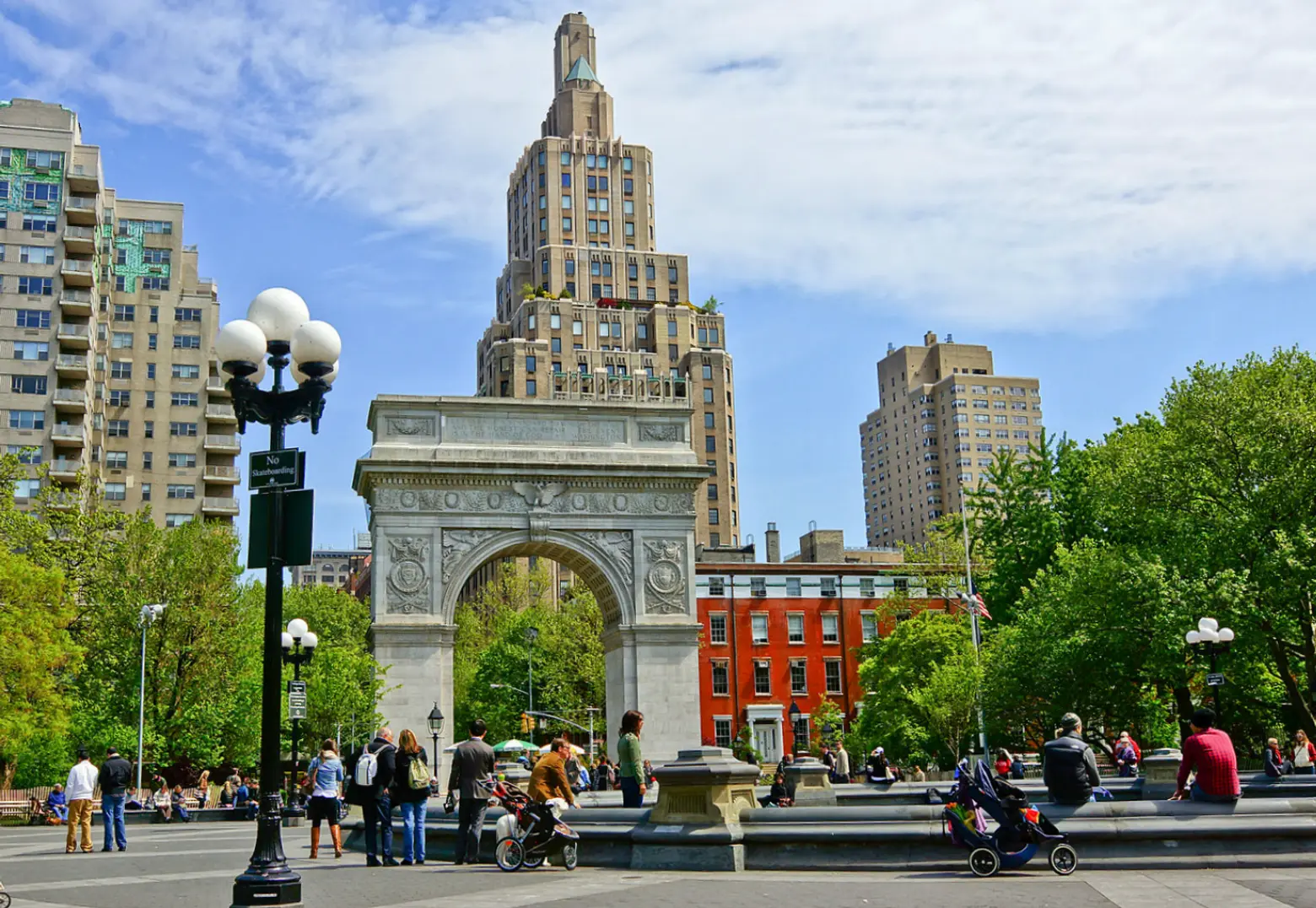
Photo via Wiki Commons
With 12 million visits a year from tourists and residents alike, Washington Square Park has plenty of things to see and do. And Parkies worth their salt know the basics: it was once a potter’s field where the indigent were buried, and a roadbed carried vehicles through the Park for almost 100 years. But the Park holds some secrets even the most knowledgeable Washington Square denizen might not know, like its connection to freed slaves in NYC and the fact that it was the first place the telegraph was publicly used.
1. A creek runs through it
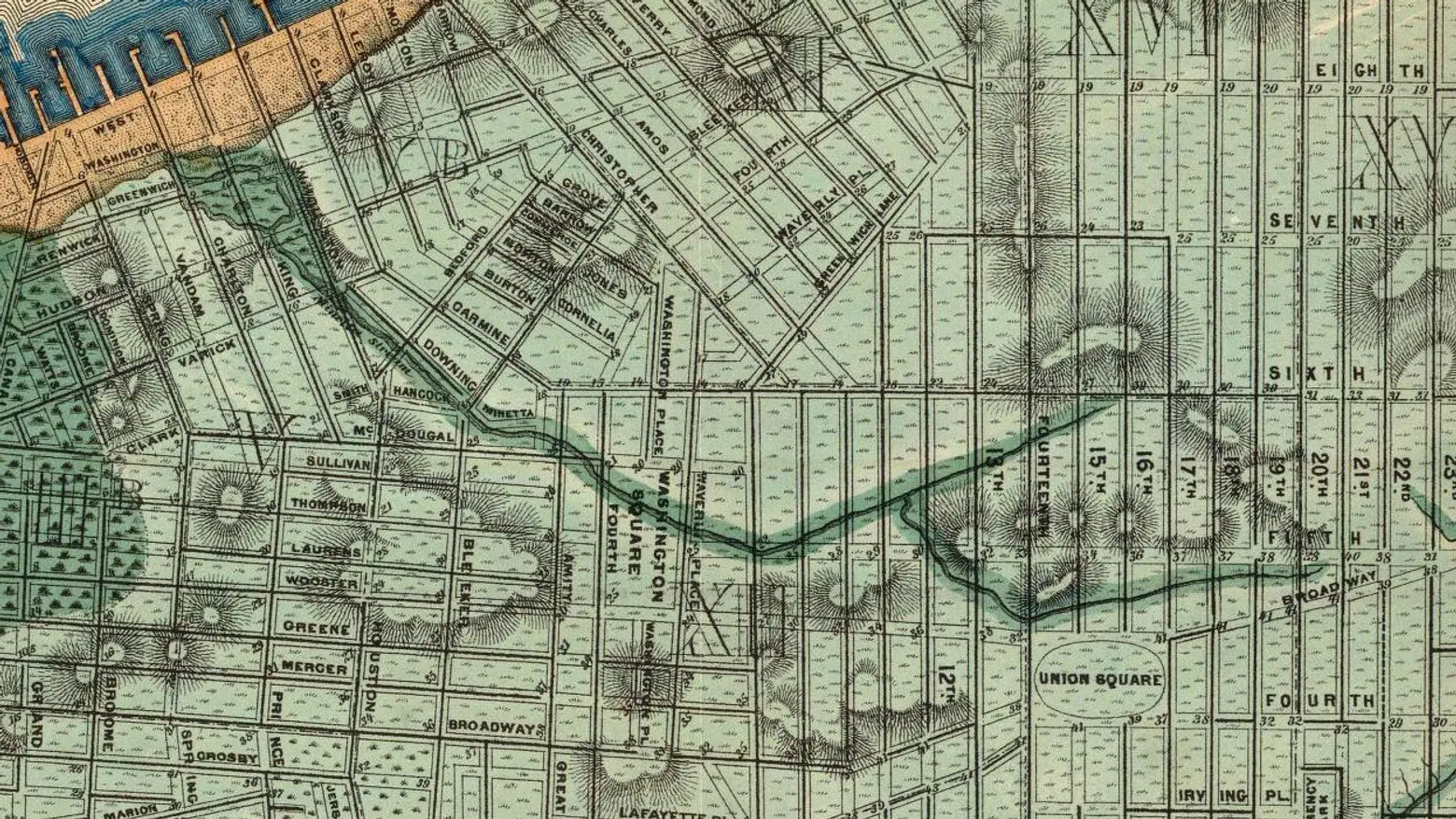 An 1865 map that shows the path of Minetta Creek with the then-current street grid superimposed, via Wiki Commons
An 1865 map that shows the path of Minetta Creek with the then-current street grid superimposed, via Wiki Commons
Not quite a river, but still nearly two miles long, Minetta Creek was one of the largest natural watercourses in Manhattan. In 1797, the land east of Minetta Creek was acquired by the city to build a potter’s field (a burial ground) for those with no money. When the potter’s field was closed in 1825, the city purchased the land to the west of Minetta and undertook the challenging project to divert it underground. Minetta Creek is partially visible through various manholes along the original path of the creek, flowing beneath the feet of Park passersby and into the Hudson.
2. This Park is greener than you think
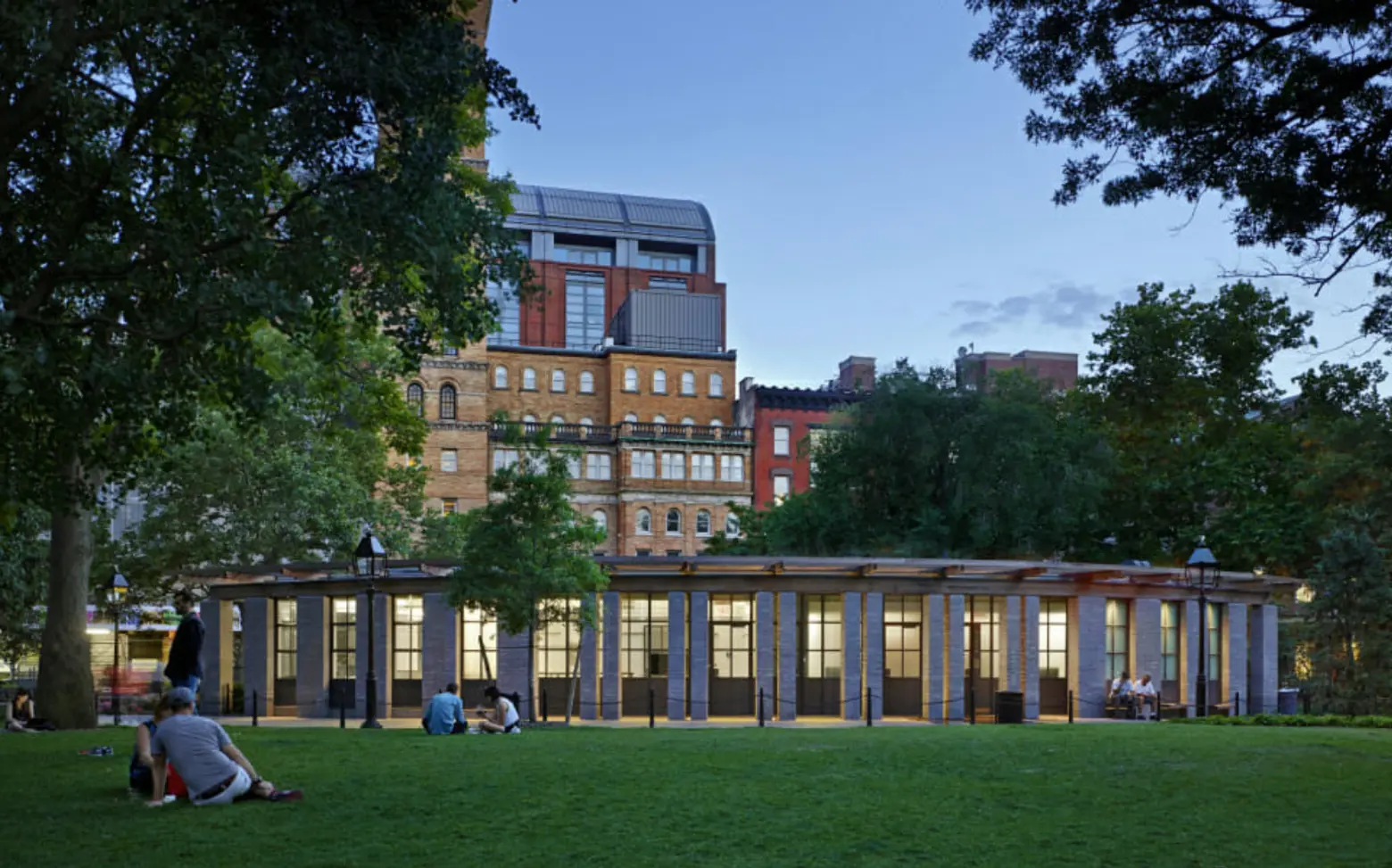 Images courtesy of BKSK Architects
Images courtesy of BKSK Architects
The Park is lush in green plants, trees, and grass, but did you know the Park House building is green as well? Built by BKSK Architects, the Park House, along with elements of the dog run and Play Hills, is LEED Platinum certified, the highest energy efficient rating by the U.S. Green Building Council. There are some serious eco-friendly features here, including solar panels and geothermal heating and cooling, and it’s built with locally sourced stone and reclaimed wood. That’s quite green for this hardworking place, which also must house public restrooms, office space, equipment and tool storage, and most notably, the pumps that operate the Park’s historic fountain.
3. It hosts one of the first tree-lighting traditions in Manhattan
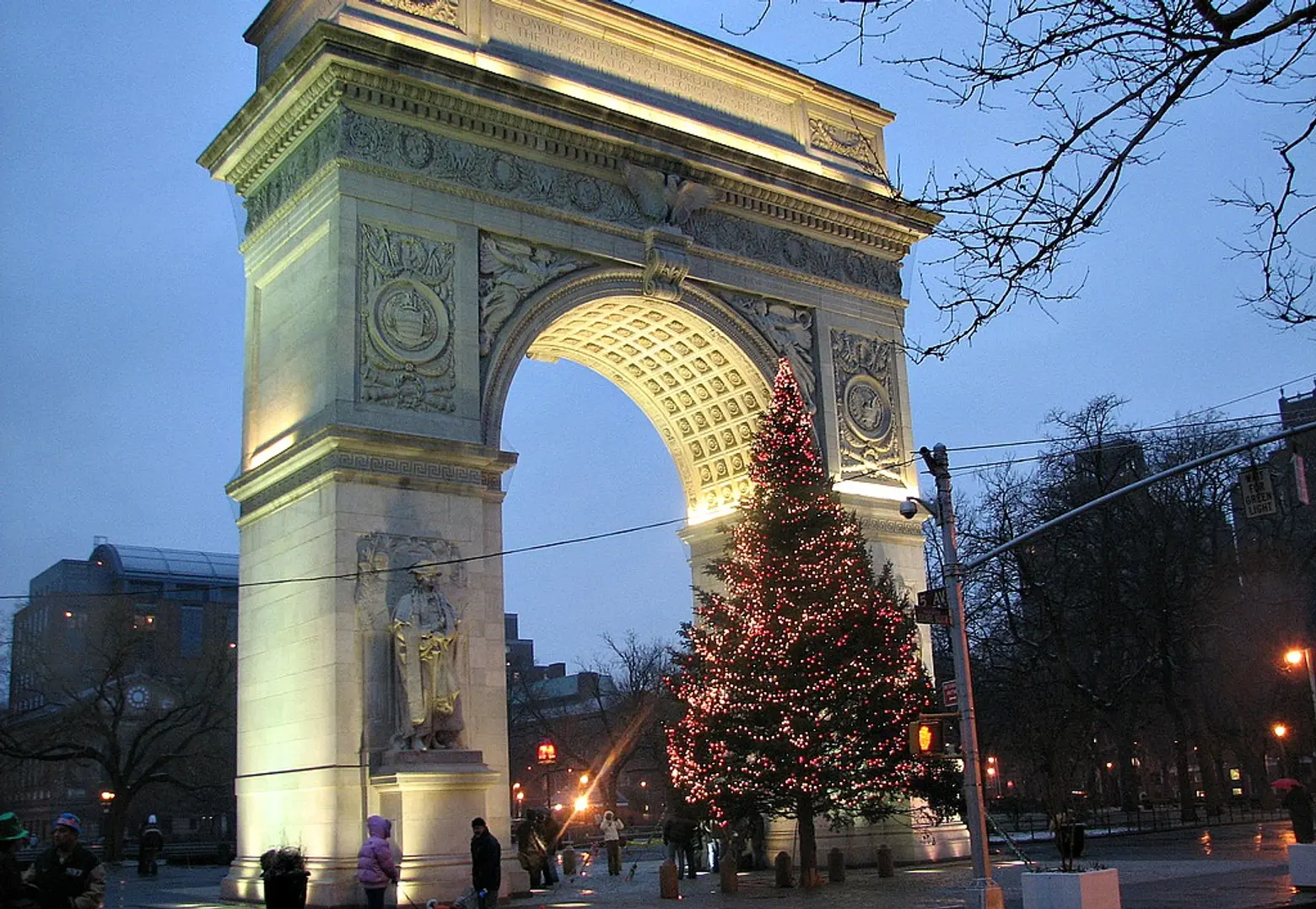 Washington Square Park Christmas tree via Kevin Bedell via photopin cc
Washington Square Park Christmas tree via Kevin Bedell via photopin cc
The Washington Square Association—NYC’s longest-running neighborhood group—has organized the Annual Holiday Tree Lighting for 93 years. The first lighting in the Park dates back to 1924 and was modeled after the first lighting of the National Christmas Tree in Washington DC’s President’s Park the year prior. The publicly lit tree lives by the Arch for the holiday season, and this long-standing tradition is even older than the famous Rockefeller Center tree lighting. The oldest tree lighting title goes to Madison Square Park, which has been lighting its holiday tree since 1912.
4. It was once farmland for freed slaves
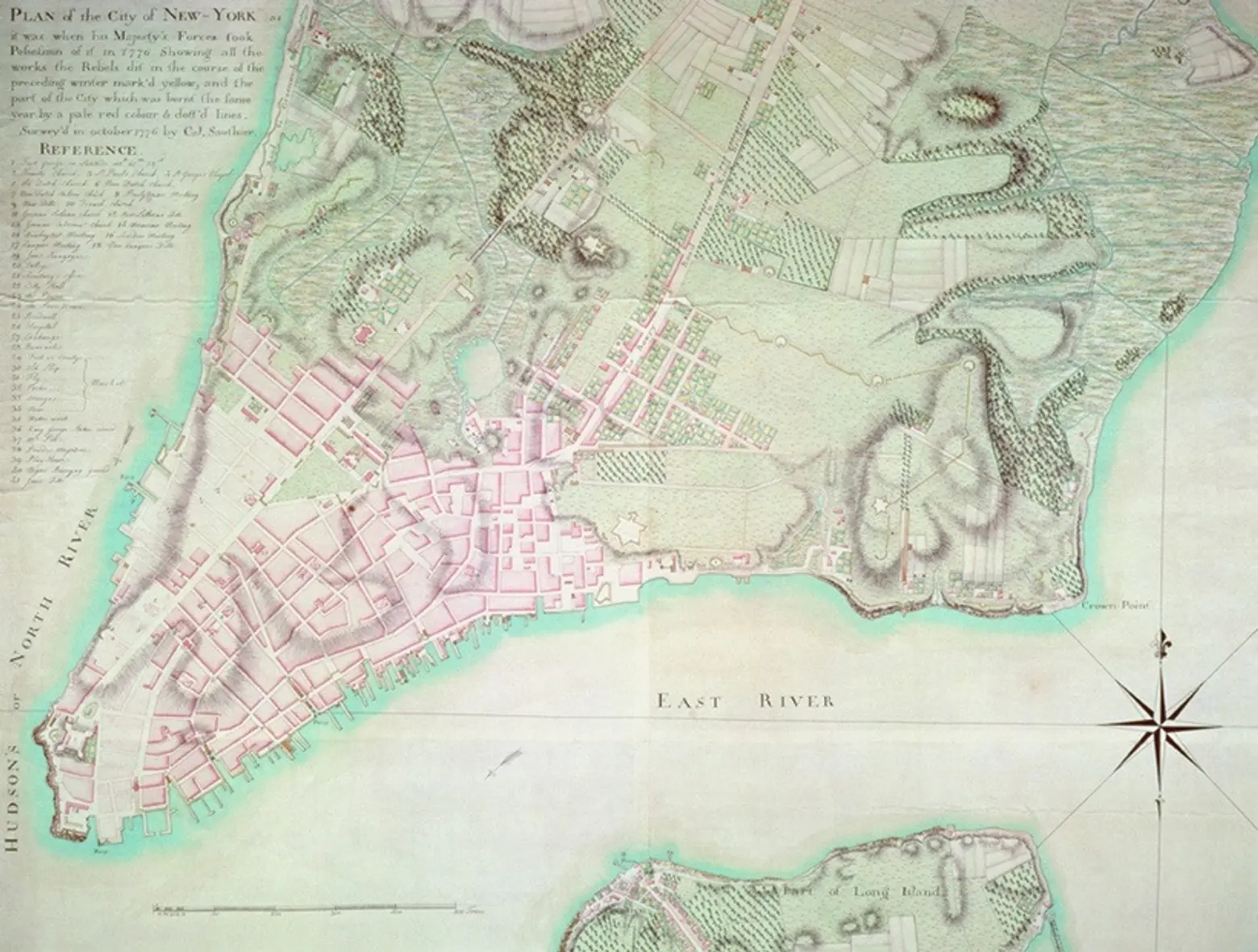 Plan of New York; courtesy of Curriculum Concepts International
Plan of New York; courtesy of Curriculum Concepts International
In 1624, the Dutch West India Company established a trading outpost at the southern tip of Manhattan. To secure enough food for the settlement’s growing population, the director of New Amsterdam freed a number of the African-born slaves in 1642 and granted them plots of land to farm in return for a portion of their crops. Some of the land grants overlapped the site of the future Park, including those of Anthony Portuguese and Manuel Trumpeter. In addition to the crops given to the Dutch, who were primarily traders, not farmers, these land grants to former slaves helped create a buffer zone between the colony and the native Lenape tribes during a time of war. The area became known as the “Land of the Blacks” and was later called “Little Africa,” where a black community continued to develop and grow well into the 20th century. The free black farmers later lost the right to own the land under English rule, and their property was incorporated into large estates owned by English landholders.
5. Garibaldi sits on some secrets
The statue of Giuseppe Garibaldi has been in the park since it’s dedication in 1888. Originally placed by the Committee for the Monument of Garibaldi, the statue was created by sculptor Giovanni Turini, who was himself a volunteer member of Garibaldi’s Fourth Regiment during the Italian Austrian war in 1866. The statue has been moved three times since it was first placed in the park, most recently during the last renovation. Upon moving the statue during a renovation in 1970, a time capsule was found hidden beneath the base. It contained documents, newspapers, and messages dating back to the early 1900’s. The clippings included accounts of Garibaldi’s death, the history of the organization that placed the statue, and information regarding the original dedication of the monument.
6. The first public demonstration of the telegraph happened right on Washington Square
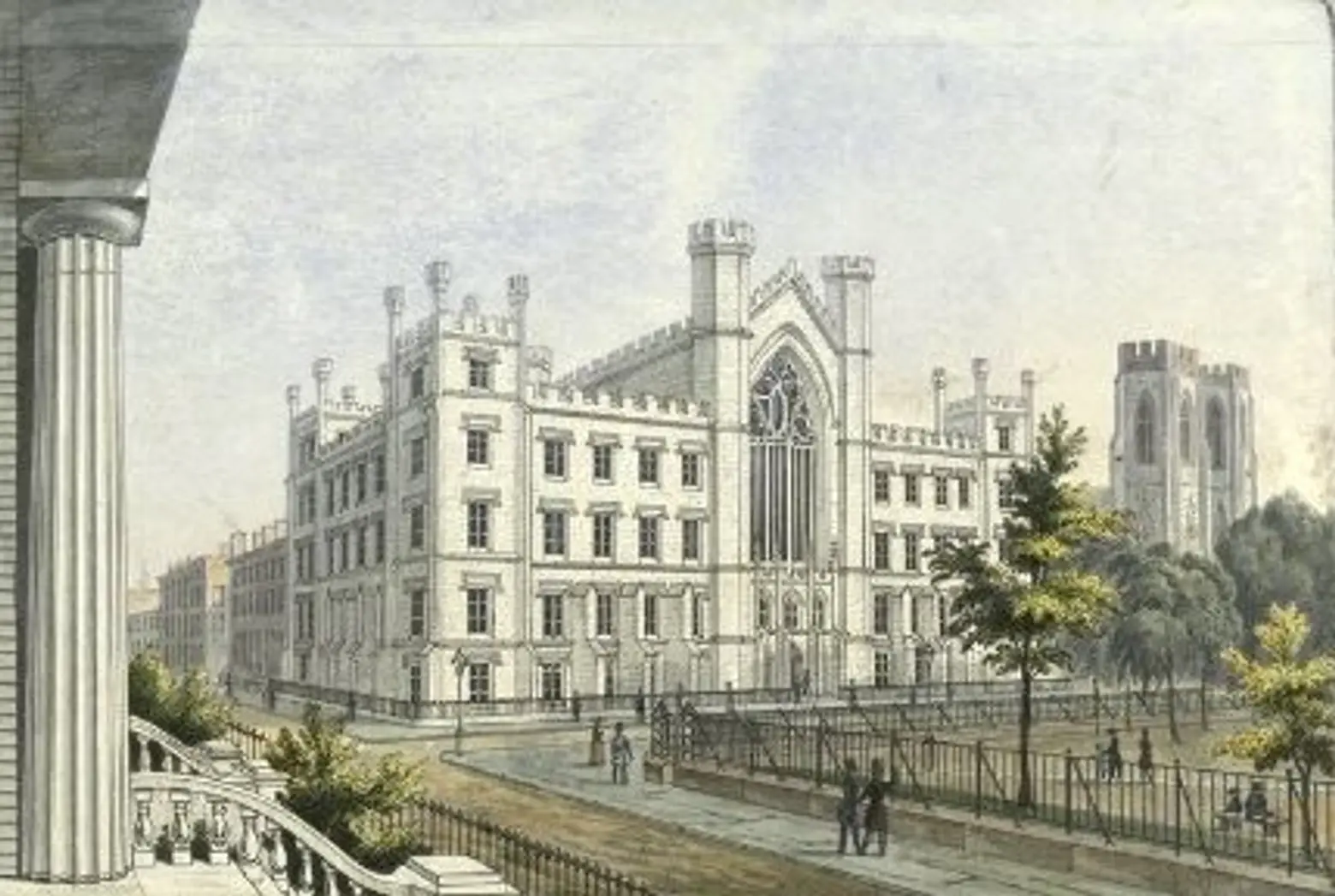 The NYU Building in 1850, where Morse set up his studio, via Wiki Commons
The NYU Building in 1850, where Morse set up his studio, via Wiki Commons
In 1838, Samuel Morse was working as a professor of Literature of the Arts and Design at the University of the City of New-York, now known as NYU. On January 24th, Morse ran a mile-long copper wire from his laboratory window at 22 Washington Square, down to the Park, around a tree, and back up through the window. He transmitted a message that read: “Attention! The Universe! By Kingdom’s Right Wheel” in only a few seconds, out-racing all other modes of communication at the time. The phrase suggests the moment has been marked as the beginning of a new era in civilization.
7. The search for marble
The Washington Square Arch was originally built with Tuckahoe Marble sourced from a quarry in nearby Tuckahoe, NY, but the quarry closed in the 1930s, well before the 2003 restoration of the Park’s most important monument. Luckily, the restoration team found the needed marble in a cache of materials reclaimed during reconstruction of the Taconic state parkway in 2002. The marble from the highway was repurposed for repairs on the Arch. During the Arch’s two-year, $3 million renovation, the monument’s distinctive rosettes were in desperate need of repair. Forty-five out of 95 rosettes were replaced with those made of high-quality cast stone designed to look like the Tuckahoe Marble copies of the originals.
8. Angels on the Arch
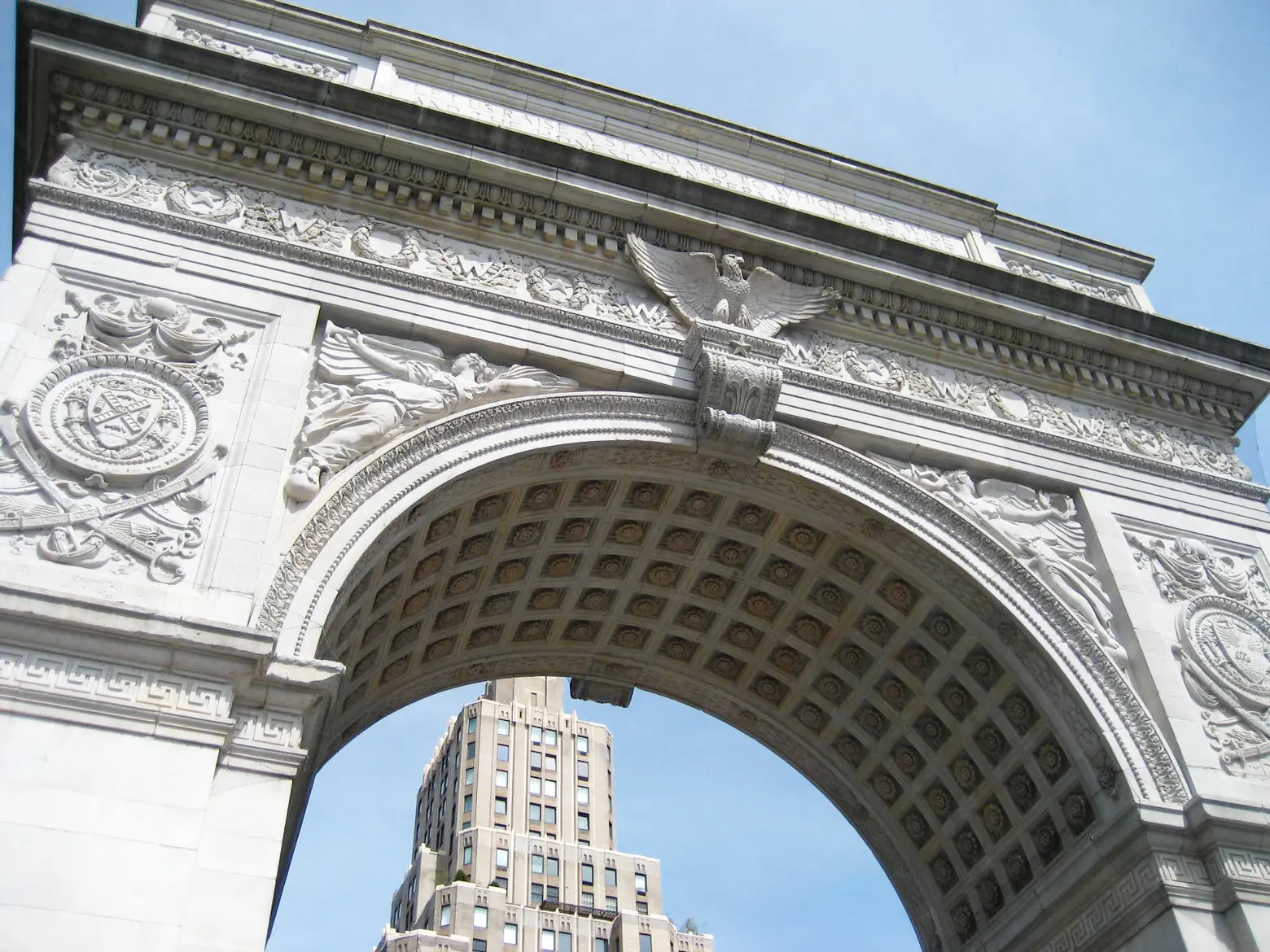 Via Flickr cc
Via Flickr cc
Flowers and chocolates may seem like a nice, romantic gesture, but it’s simply not enough when you’re William Rhinelander Stewart and Stanford White, creators of the iconic Washington Square Arch. The men asked sculptor Frederick MacMonnies to model the faces of the two angels on the Arch after their wives. The Angels were worked on by two of the greatest sculptors of the 19th century, MacMonnies’ and his master, Augustus Saint-Gaudens. However after multiple sculptural attempts, there unfortunately isn’t much of a resemblance to the women in the final product.
9. Public Art at the Arch has a history
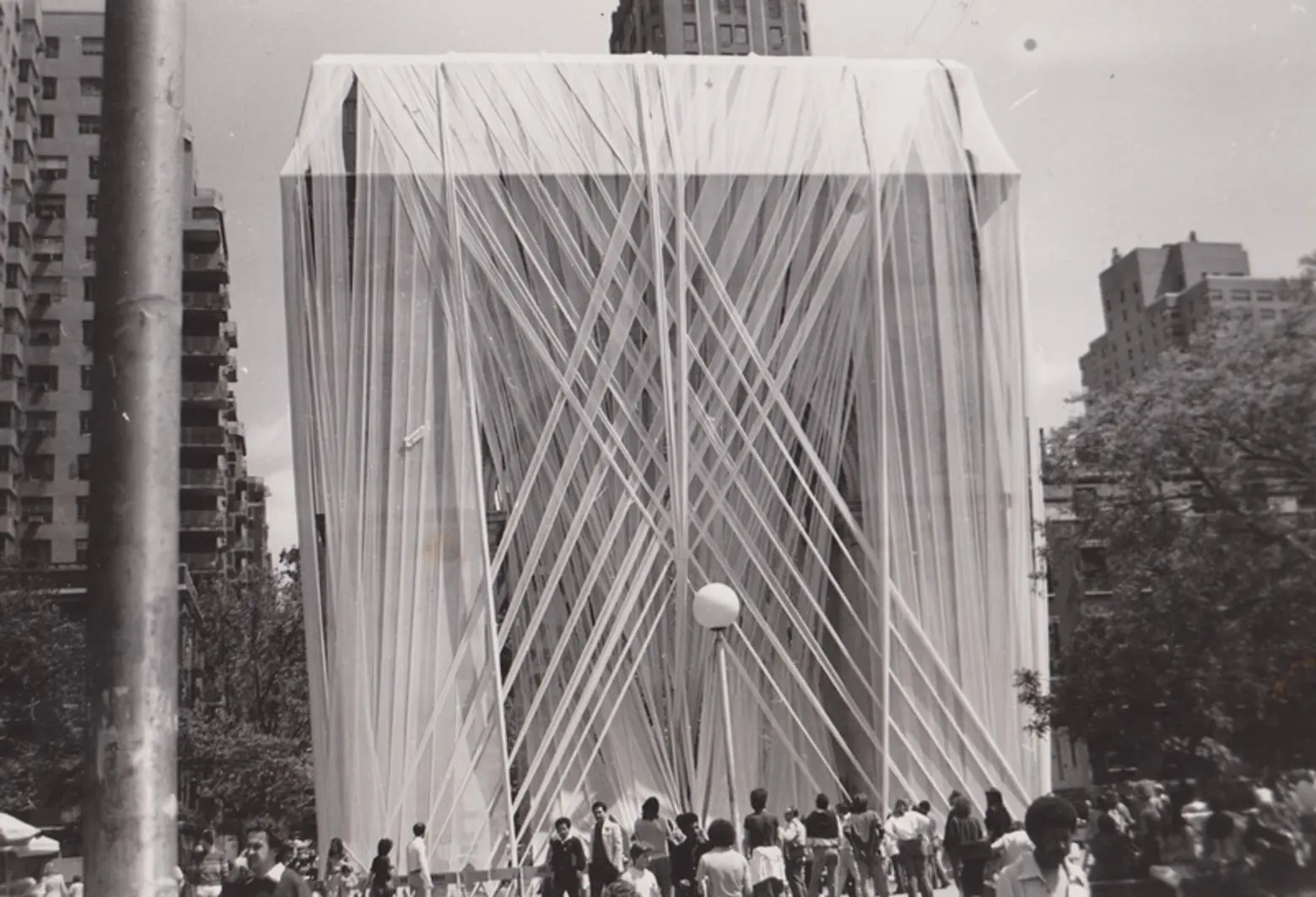 Washington Square Arch wrapped by artist Francis Hines, 1980 © Greenwich Village Society for Historic Preservation/Carole Teller
Washington Square Arch wrapped by artist Francis Hines, 1980 © Greenwich Village Society for Historic Preservation/Carole Teller
Bold, well-known, influential Chinese artist and activist Ai Weiwei used the Arch as a location for one of his massive sculptures from the city-wide exhibition, “Good Fences Make Good Neighbors.” WeiWei’s sculpture, which invoked a conversation about human rights through the lens of a migration-crisis, is not the first time the Arch has been used as a “canvas” for an artist. In 1980, West-Village based artist Francis Hines wrapped the Arch in 8,000 strips of polyester gauze, effectively bandaging the “wounded” monument. The project was sponsored by NYU in order to raise funds to help restore the Arch and other areas of the Park.
10. The current Park House isn’t the only building to be built here
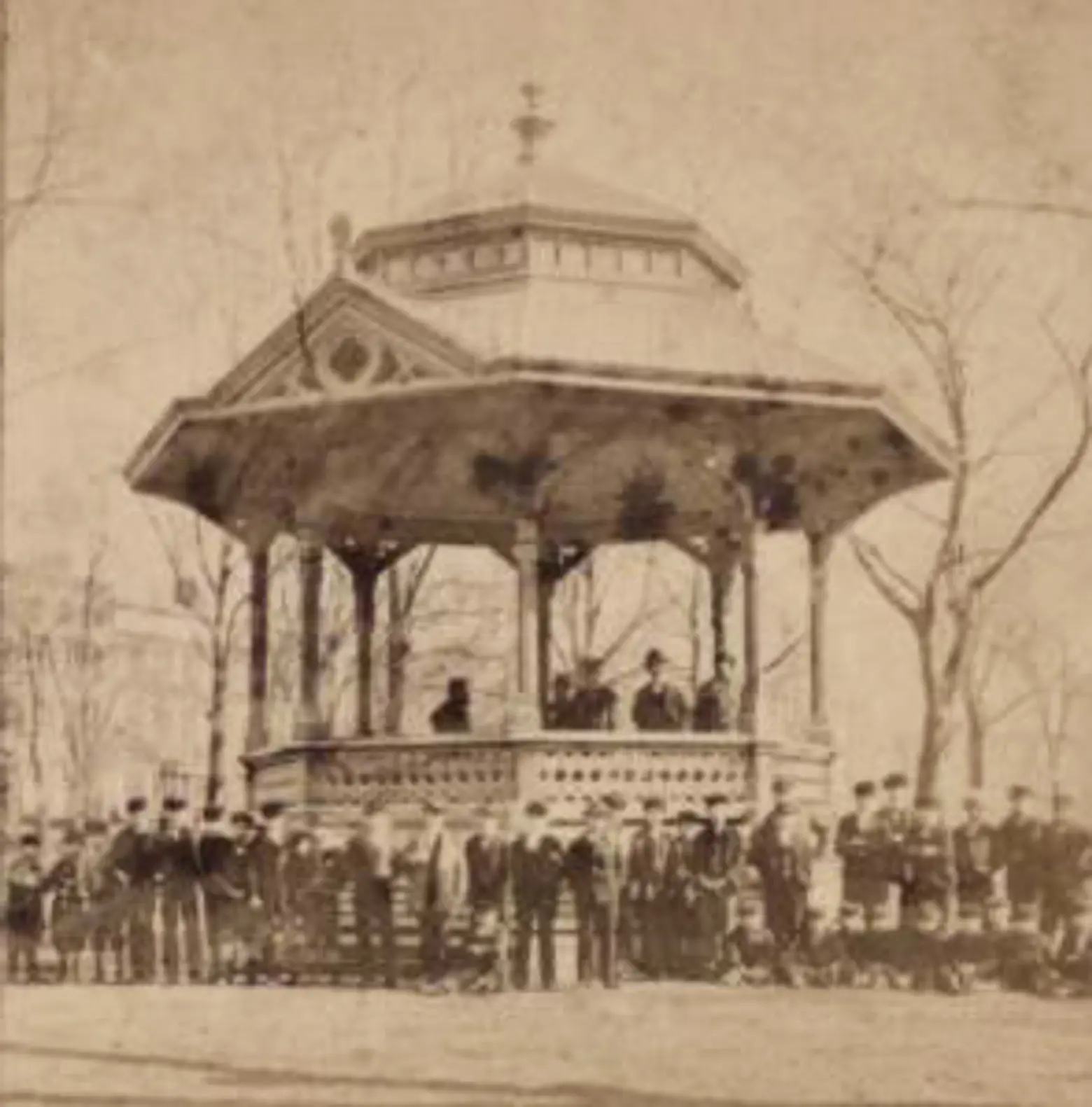 The music pavilion in Washington Square in 1865, via NYPL
The music pavilion in Washington Square in 1865, via NYPL
The Park House may be the only building that stands in the Park today, but other buildings have graced this space since the 1700s. Some of the oldest buildings in what would become the Park were the house and outbuildings of Thomas Ludlow, a well-to-do New York merchant. Built in 1789 in today’s northwestern corner, the home and outbuildings were most likely used by Ludlow as a summer estate. By 1797, the potter’s field moved in on the East side of Minetta Creek and a Keeper’s house was built in the northeast corner of the park, where the groundskeeper was permitted to live if he desired. These buildings were eventually demolished after the city acquired Ludlow’s land to annex to the potter’s field, which was filled and converted to a parade ground in 1826. The park’s landscape design has changed considerably since then and even featured a music pavilion and police shelter in its long history as a NYC Park.
+++
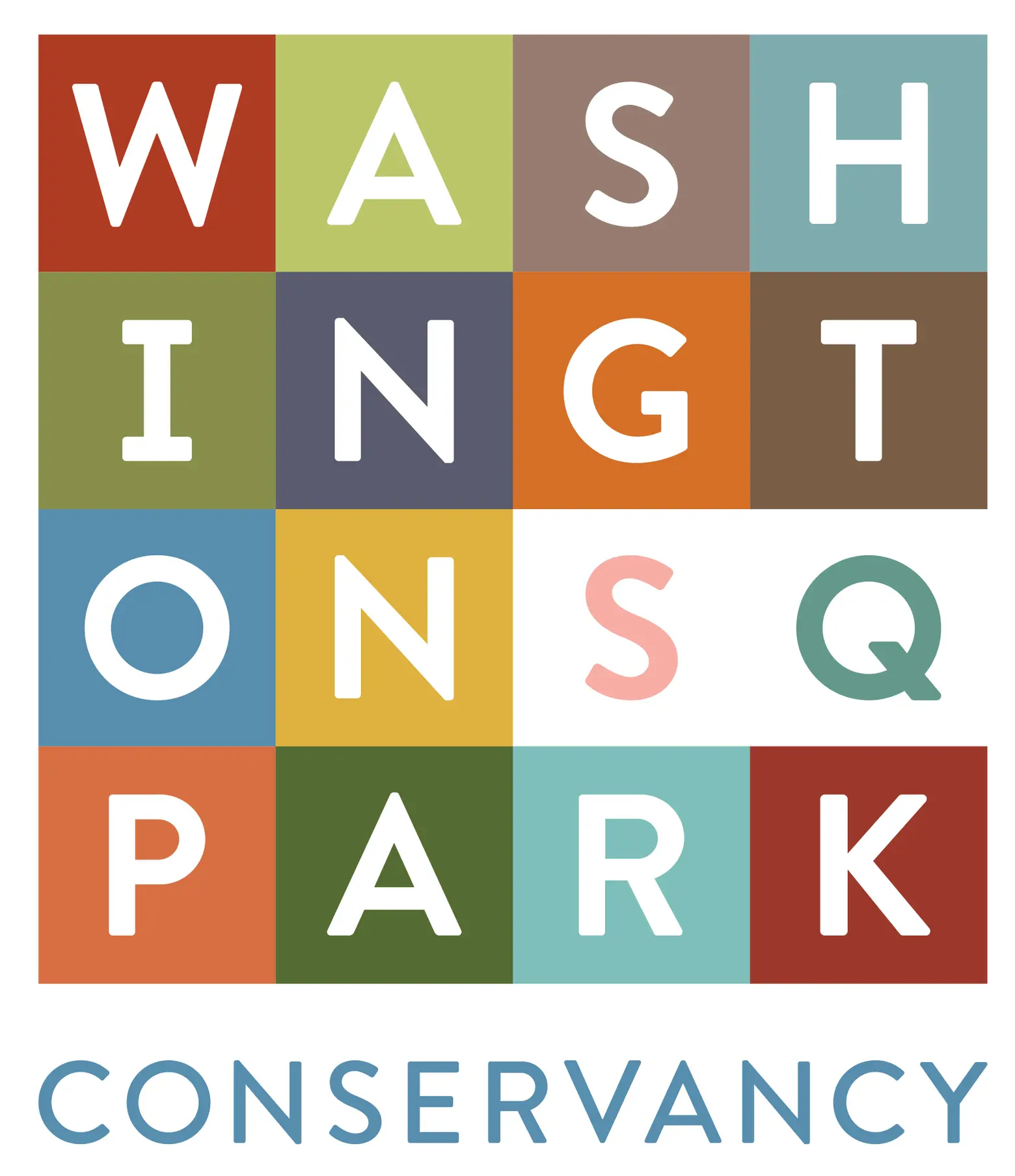 The Washington Square Park Conservancy is a non-profit organization working with the New York City Parks Department and neighborhood groups to ensure that Washington Square Park continues as a diverse and historical urban green space through engaging volunteers and raising funds to help keep the park clean, safe and beautiful.
The Washington Square Park Conservancy is a non-profit organization working with the New York City Parks Department and neighborhood groups to ensure that Washington Square Park continues as a diverse and historical urban green space through engaging volunteers and raising funds to help keep the park clean, safe and beautiful.
RELATED:
